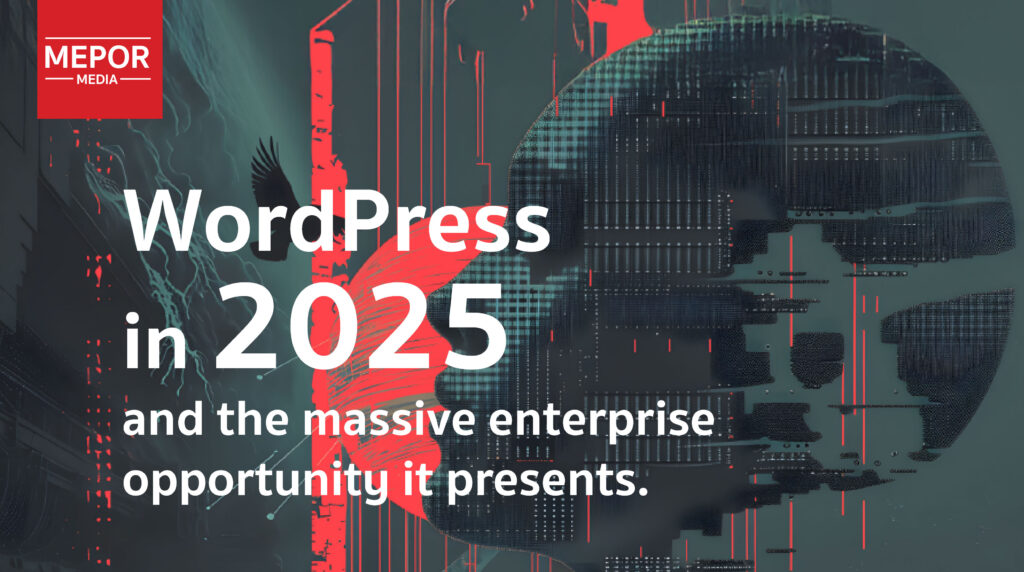Let’s take a look at what changes we can expect for WordPress in 2025. It must be acknowledged that WordPress remains the popular open-source CMS for creating ready-to-use websites. Over the years, it has continuously evolved while facing certain limitations and reducing overall costs.

Recently, WordPress itself released the report “WordPress in 2025 and the massive enterprise opportunity it presents” by Noel Tock. This report provides an overview and insights into the forthcoming transformations in the CMS industry in 2025. It emphasizes the unique strengths of WordPress as an open-source CMS that can adapt and innovate continuously—even during times of market volatility—unlike its proprietary counterparts. The report breaks down its findings into the following key areas:
Trends in Open-Source vs. Proprietary CMS
- Open-Source Advantage:
Open-source CMS platforms like WordPress benefit from a large community of developers. This extensive network enables continuous innovation and swift adaptation to changing market conditions. - Challenges for Proprietary CMS:
In contrast, proprietary CMS systems, which previously received high levels of investment, are now losing their competitive edge. These systems are forced to transition from a traditional seat license revenue model to a consumption-based model, such as charging for AI usage.
No-Code Editing Tools at Your Fingertips
- Full-Site Editing (FSE):
WordPress has developed a powerful Full-Site Editing (FSE) tool that allows users to create and customize websites quickly without needing to write any code. - Transformation into Block Themes:
Additionally, legacy themes can be converted into Block Themes. This transformation minimizes the need for dedicated development teams when creating microsites or landing pages, ultimately saving both time and costs for organizations.
Integrating AI into WordPress
- AI as a Major Driving Force:
AI is rapidly emerging as a key driver across all industries. In the CMS space, it is revolutionizing data processing and streamlining workflow improvements. - The “100x Play” Concept:
The idea behind “100x play” is to build an ecosystem in which each plugin is enhanced with an AI agent. These agents are then interconnected through an orchestrator system, significantly increasing the customization and efficiency of WordPress for enterprise applications.
The Future of Headless CMS and the Hybrid Approach
- Limitations of Pure Headless CMS:
Although Headless CMS was once considered the future, by 2025 the pure headless approach is encountering limitations. This is due to the increasing need for seamless experiences in both content management and presentation. - Hybrid or Universal CMS:
In response, WordPress is shifting towards a hybrid or “universal” CMS model that combines the strengths of traditional structured systems with headless architecture. This approach offers organizations the flexibility to choose the most appropriate features for different parts of their website.
Are You Currently Using WordPress?
- A Recommendation for Organizations:
For organizations looking to improve or develop their CMS systems, investing in WordPress is highly recommended. The platform not only offers robust content management and editing capabilities but also provides opportunities to integrate AI and no-code features that cater to enterprise-level needs. - Considering Long-Term Benefits:
It is also crucial to consider the overall costs and long-term benefits of transitioning to a flexible system that can readily adapt to new technological advancements.
According to the report, WordPress is well-positioned to become the leading platform in the CMS industry by 2025. Its ability to adapt to changing market conditions, along with the integration of AI technology and advanced no-code editing tools, makes WordPress an outstanding choice for large organizations seeking flexibility, cost-effectiveness, and continuous innovation in the digital age.
You can also read the full report click here
